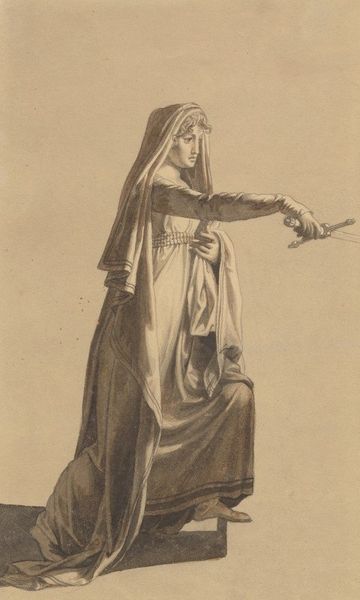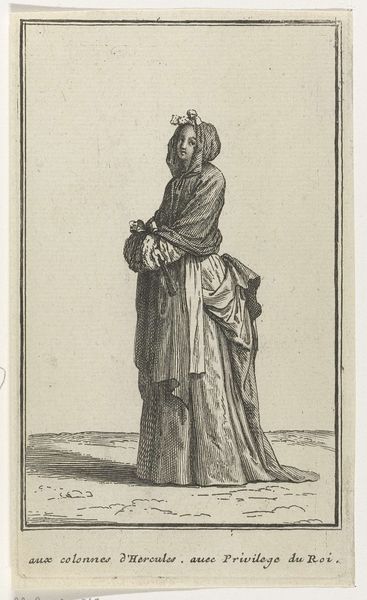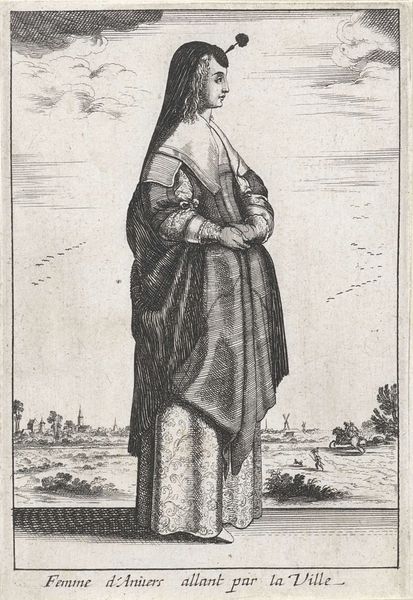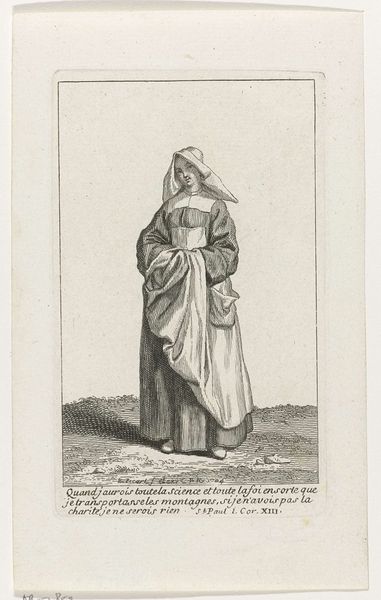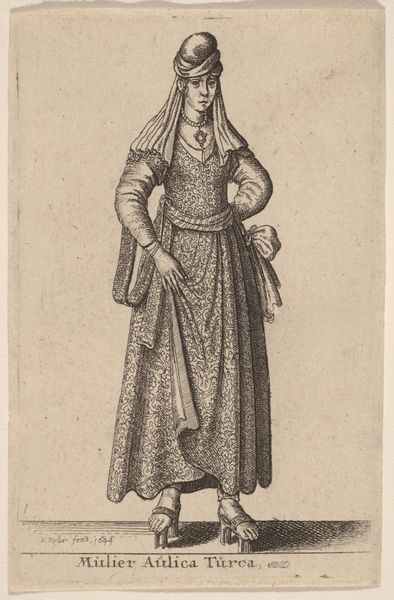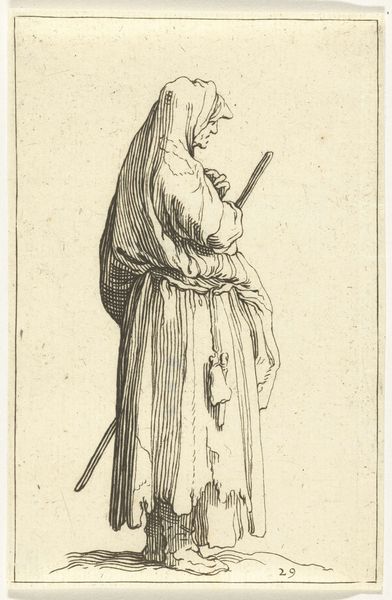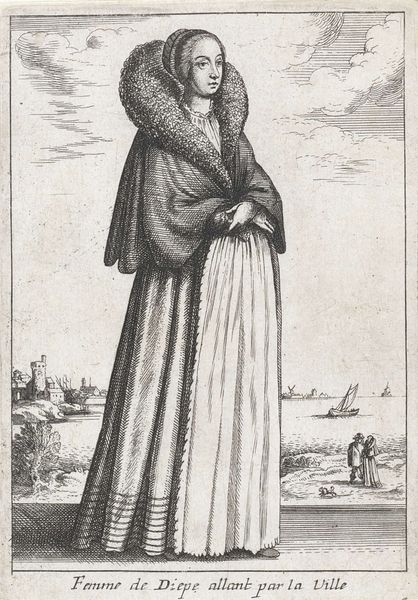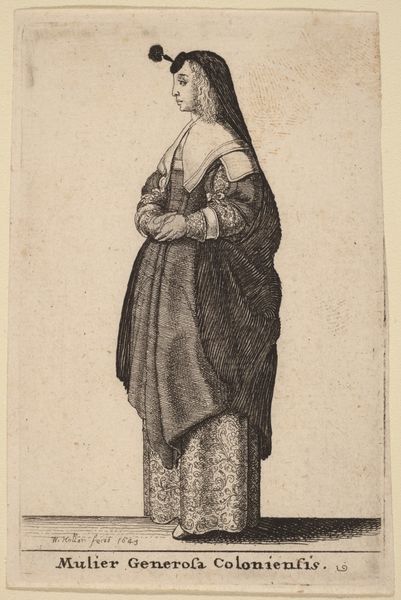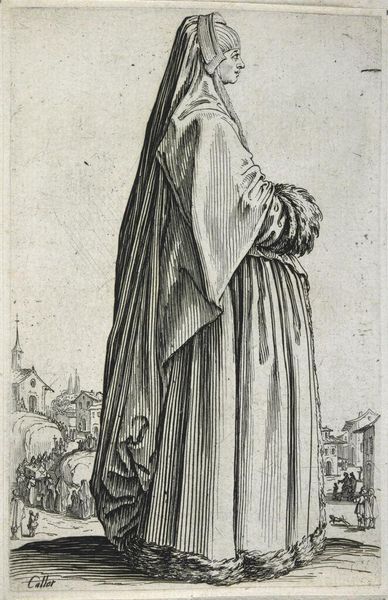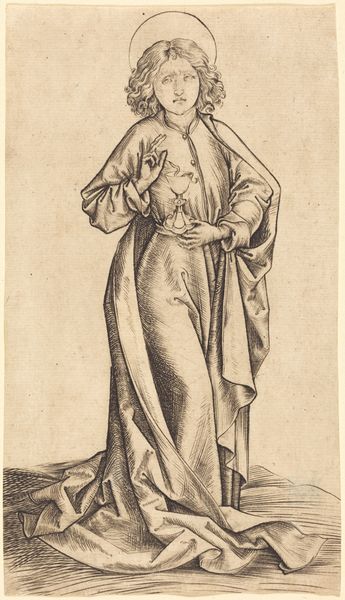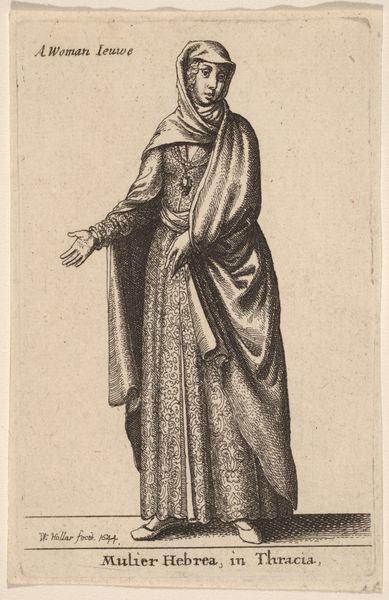
drawing, engraving
#
portrait
#
drawing
#
baroque
#
pencil sketch
#
charcoal drawing
#
figuration
#
portrait reference
#
pencil drawing
#
portrait drawing
#
engraving
Dimensions: height 294 mm, width 191 mm
Copyright: Rijks Museum: Open Domain
Editor: This engraving, "Jewish Woman in Clothing with Veil" by François van Bleyswijck, dating from 1681 to 1746, immediately strikes me with its detailed depiction of clothing and jewelry, yet she seems to be set against an almost desolate landscape. What do you see in this piece, considering its historical context? Curator: The depiction of the Jewish woman here, set against what appears to be an indifferent, sparsely rendered landscape, is fascinating when viewed through the lens of societal norms of that period. It prompts us to consider the public role of portraiture. Were these commissioned, or created as part of larger series of "types?" What narratives did these images promote and, equally crucial, what biases might they reflect or reinforce concerning religious or ethnic minorities within Dutch society? Editor: So it wasn't simply capturing a likeness, but possibly making a broader comment about this group of people? Curator: Exactly. Consider also the power dynamics involved. Who gets to represent whom, and for what purposes? Was this meant for private consumption or for a broader, perhaps even public, audience? These factors profoundly influence the meaning embedded within the work. Were the details of her clothing accurate or imagined? How would viewers in the 17th and 18th centuries interpret this depiction, compared to our reading today? Editor: It’s unsettling to think that an image can play a role in reinforcing social biases. I had initially looked at the clothing details first, but now the historical implication changes everything. Curator: That’s the power and the challenge of art history – it encourages us to unpack these layers, examining how visual imagery and the power of representation intersect with broader socio-political forces. It really shows us how even seemingly straightforward portraits can be complex cultural documents.
Comments
No comments
Be the first to comment and join the conversation on the ultimate creative platform.

